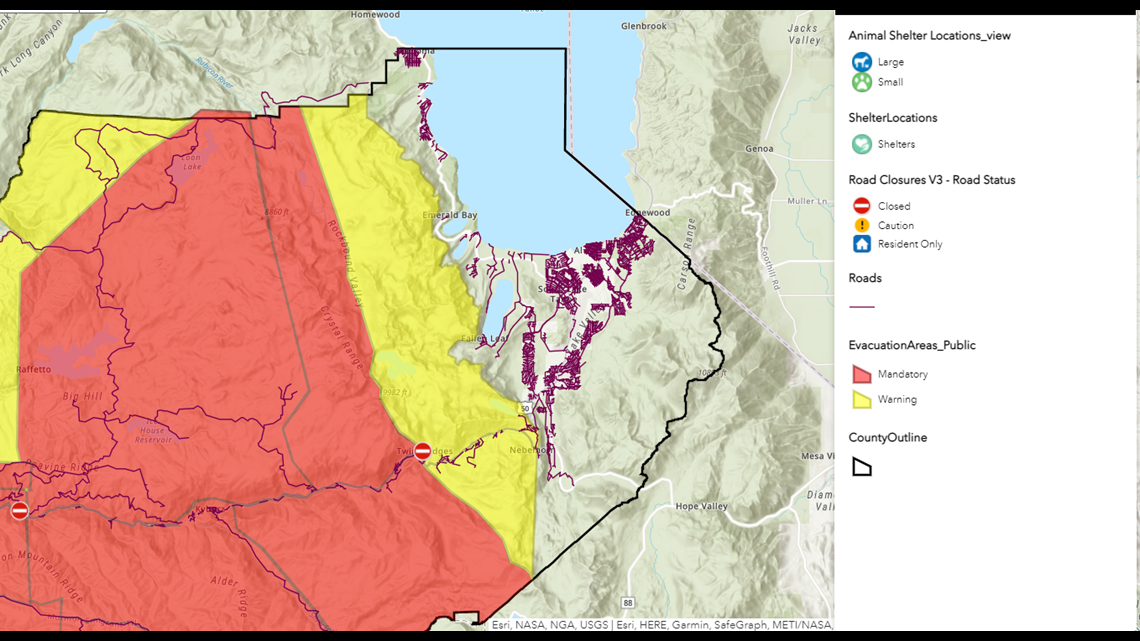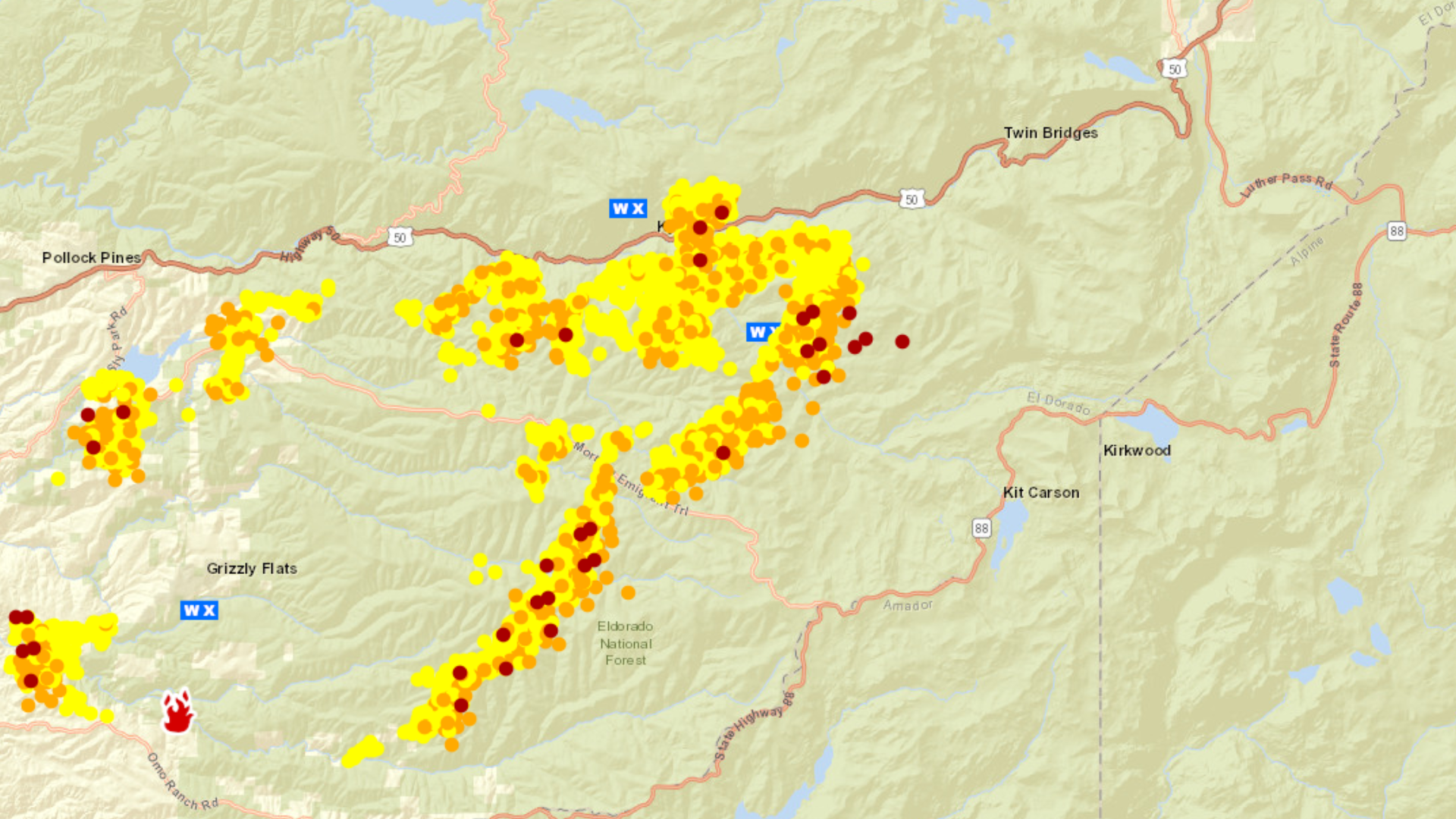SOUTH LAKE TAHOE, Calif. — Since the beginning of the Caldor Fire in the Eldorado National Forest, an eventual connection to the South Lake Tahoe has been highly discussed and examined.
The prevailing winds have been coming in from the southwest each afternoon and the fire has been moving toward the Tahoe basin off to the northeast a little each day. At times when the fire has burned with Red Flag conditions, the fire has moved several miles in that direction.
Fire growth this week has been slowed due to higher humidity, lower temperatures and less wind, but the steady push north and east has many concerned.
Even with the current lower risk of the fire, there is a way for the fire to enter the Tahoe basin.


North of Highway 50, the terrain is unfavorable for fast fire growth. The vegetation thins out in the Desolation Wilderness and granite outcroppings limit base fuels. The area north of Hwy. 50 also has some of the highest mountain peaks in the region, reaching above 8,000 feet.
South of Hwy. 50 is a different story because that is where most of the fire is burning. There is plenty of fuel in the way of the prevailing winds and past fire growth to the north and east. If the fire continues to move northeast, it would encounter a possible quick run uphill of Strawberry Creek, then closer to the Sierra-at-Tahoe Ski Area and eventually to Echo Summit, which sits at more than 7,000 feet.
The fire would then have to descend in elevation by more than 1,000 feet from Echo Summit to Christmas Valley and Meyers. There are a lot of homes and businesses that would be threatened in this scenario. If the fire moved with south winds to the north, South Lake Tahoe would be directly in line.
This connection of dots is far from certain and many seemingly difficult things would need to happen for the South Lake Tahoe region to be threatened, but it is not an impossibility. It needs to be stated that low probability, and high impact scenarios can and do happen with large wildfires and every outcome needs to be discussed.
With all of this laid out, the weather would need to change for more fire growth. We would need much stronger southwest winds with low humidity for the fire to make big strides to the South Lake Tahoe region, which is more than 12 miles from the fire. The wind the rest of this week will be breezy with 15-20 mph gusts and continue to push the fire in the general direction of South Lake Tahoe, but no major wind events are forecasted for the area the rest of this week.
ABC10: Watch, Download, Read
Watch more from ABC10



















